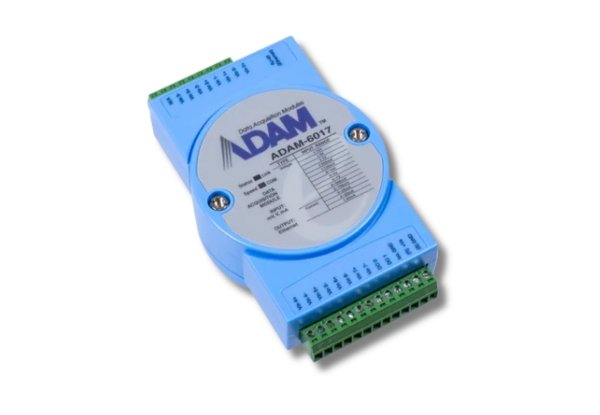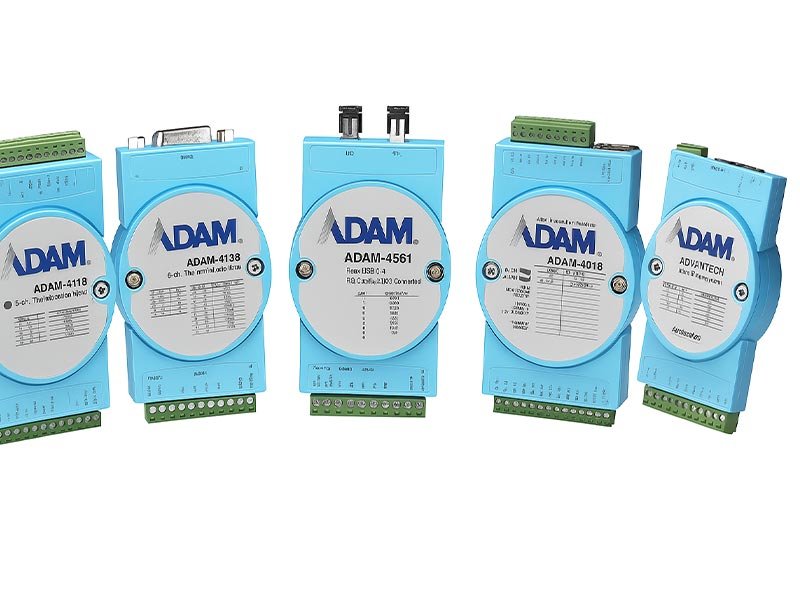When you walk into a modern factory, everything looks calm on the outside. Machines hum in sync, lights blink at perfect intervals, and the production line keeps moving like clockwork. But behind this seamless operation lies a world of intelligent communication between sensors, devices, and systems and that’s where ADAM I/O modules do their job.
These small devices may not be in the spotlight, but they hold everything together. Whether it’s collecting temperature data from a furnace or triggering an alarm when pressure levels rise, ADAM Advantech modules quietly make sure the right data moves to the right system instantly.
Let’s break down why ADAM modules are considered the backbone of modern industrial systems and why so many Indian industries choose Global Infotech Solutions to integrate them.
Understanding the Role of I/O in Industrial Automation
Imagine your body without senses. No touch, no sight, no hearing you’d have no idea what’s happening around you. In the same way, industrial systems need a way to sense the environment and respond. That’s where I/O modules come in.
I/O stands for Input/Output. These modules collect data from the environment (inputs) and send commands to machines (outputs). Think of them as translators between the real world and your control system.
For example:
- A temperature sensor (input) detects heat.
- An I/O module sends that data to the control unit.
- If it gets too hot, the I/O module triggers a fan (output) to turn on.
This constant communication is essential in industries like:
- Power plants
- Water treatment units
- Food processing
- Manufacturing lines
Without reliable I/O modules, industrial systems would simply stop working.
What Makes ADAM Different from Traditional I/O Modules
Traditional I/O systems are often bulky, hard to wire, and tricky to modify once installed. They were built for a time when systems didn’t change much.
ADAM changed the game.
Here’s how ADAM modules stand out:
- Modular design: Add or remove modules as needed without rewiring everything
- Compact size: Save space in control cabinets
- Easy installation:Mount directly on DIN rails and connect with minimal wiring
- Support for standard protocols: Communicate via Modbus, RS-485, Ethernet, and more
- Remote access: Configure and monitor from a control room or even offsite
With ADAM Advantech , you don’t need to tear down your setup when needs change. It adjusts with your system one module at a time.
Features & Benefits of Using ADAM Advantech I/O Modules

When it comes to real-world use, ADAM offers a mix of flexibility, reliability, and simplicity. Let’s break it down into features and benefits that matter most in the field.
Features
- Multiple I/O types in one system (analog, digital, counter, relay)
- Wide operating temperature range
- LED indicators for quick diagnostics
- Support for multiple communication interfaces
- Designed for harsh industrial environments
Benefits
- Reduces system downtime
Fast fault detection and plug-and-play capability help fix problems quickly. - Speeds up installation
With minimal wiring and modular setup, teams save time during deployment. - Supports future expansion
Add more modules without disturbing the current system. - Low maintenance
Durable design means fewer replacements and field visits. - Remote troubleshooting
Engineers can monitor and control from anywhere.
That’s why companies look at ADAM not just as hardware, but as a smart long-term investment.
Common Use Cases for ADAM in Industrial Systems
Let’s look at how real industries use ADAM modules every day.
1. Food & Beverage Processing
Temperature, pressure, and flow need to be monitored 24/7. ADAM modules collect this data and alert operators before anything goes off balance.
2. Water Treatment Plants
From pH sensors to flow meters, ADAM collects environmental data and passes it to central systems for real-time decision-making.
3. HVAC Systems
Building automation relies on ADAM for managing heating, ventilation, and cooling by processing input from various sensors.
4. Renewable Energy
Wind turbines and solar power stations use ADAM to monitor energy output, weather conditions, and grid health.
5. Smart Manufacturing
Factories rely on ADAM to link machines, quality control units, and safety systems all in one synchronized setup.
These use cases prove one thing: ADAM fits into nearly any industrial scenario without the need for complex redesigns.
Why Modular I/O System: ADAM Is a Long-Term Investment
Think about how fast technologies evolve in automation. A system built today may need an upgrade tomorrow. That’s where modular I/O really shines.
Here’s why ADAM makes long-term sense:
- Future-ready architecture: Add new modules without changing the main system
- Budget flexibility: Expand when needed, not all at once
- Maintenance-friendly: Replace a single unit instead of the whole system
- Works with old and new setups: ADAM speaks multiple industrial languages, making integration easy
By choosing a Modular I/O System: ADAM, companies avoid frequent overhauls, save on costs, and stay prepared for what’s next.
Why Industries Trust ADAM & Global Infotech Solutions
Having the right hardware is only half the story. You also need a trusted partner who understands your setup, offers support, and provides guidance.
That’s where Global Infotech Solutions comes in.
Why companies choose Global Infotech Solutions:
- Expert guidance for selecting the right ADAM module
- Full technical support during installation and configuration
- Stock availability for urgent procurement
- On-site help when required
- Clear documentation and post-sales support
We’ve worked with industrial clients across sectors to help them build reliable, cost-effective automation setups. Our goal is simple help you get the most from your investment in ADAM.
Mistakes to Avoid When Choosing I/O Modules
It’s easy to get overwhelmed by technical specifications or vendor promises. But here are a few mistakes that can cost you both time and money.
Common Mistakes:
- Ignoring communication protocols
Not all I/O modules speak the same language. Always check compatibility with your controller or PLC. - Overlooking expansion needs
Systems grow. Choosing a fixed I/O unit might lock you out of future upgrades. - Going for the cheapest option
Low-quality modules often fail in harsh environments and cause system failures. - Wrong signal type selection
Analog and digital inputs are not interchangeable. Pick based on your sensor type. - Skipping vendor support
Without expert help, even a good product can become a headache.
Avoiding these mistakes keeps your automation systems stable, efficient, and easy to maintain.
The Future of Industrial Automation with ADAM
As industries move toward smarter systems, edge computing, and real-time analytics, the role of modular I/O becomes even more important.
ADAM modules are already supporting:
- Remote factory monitoring
- Predictive maintenance
- Real-time machine health updates
- Energy usage tracking
- Cloud-integrated automation
With trends leaning towards smaller teams managing larger systems, ADAM Series enables more control with less effort.
Companies planning for the future need hardware that can evolve with software and that’s exactly what ADAM offers.
FAQ
Q1. How do ADAM I/O modules work?
Answer: They connect sensors and devices to control systems by collecting input data (like temperature or flow) and sending output commands (like switching on a motor). ADAM makes this process easier with modular design and remote access.
Q2. Can ADAM modules be used with my existing PLC?
Answer: Yes, ADAM supports standard protocols like Modbus and RS-485, which most PLCs are compatible with. You can integrate ADAM into both new and existing systems.
Q3. What is the typical lifespan of an ADAM module?
Answer: ADAM modules are built for long-term industrial use. With proper handling and environment, they can function for many years with minimal maintenance.
Q4. Do ADAM modules support remote monitoring?
Answer: Absolutely. Many ADAM models allow remote configuration, monitoring, and diagnostics using web interfaces or SCADA integration.
Q5. Is ADAM Advantech suitable for small industries?
Answer: Yes, its modular nature makes it ideal for small setups that need to scale over time without replacing the entire system.
Conclusion
ADAM I/O modules may not be flashy, but they handle the toughest jobs in automation connecting, collecting, and controlling with precision. From factories to utilities, they keep systems running smoothly.
And when paired with Global Infotech Solutions, you don’t just get hardware; you get a trusted team that helps you get things right from the start.
If you’re building or upgrading your industrial systems, now’s the right time to look at ADAM Advantech as your foundation.

